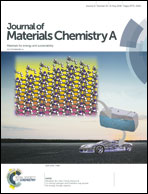Sludge biochar-based catalysts for improved pollutant degradation by activating peroxymonosulfate†
Abstract
The persulfate-based advanced oxidation process is a promising technology for water treatment, while its effectiveness depends mainly on the activation efficiency of catalysts and the oxidant yield derived from persulfate. Thus, exploration of efficient and cost-effective activators for persulfate decomposition is highly desired. In this work, biochar, which was synthesized via a facile one-pot pyrolysis of sewage sludge, was proven to be an efficient persulfate activator for pollutant degradation. For a representative endocrine disrupting pollutant, bisphenol A, an average removal rate of 3.21 mol BPA per mol oxidant per h could be achieved by peroxymonosulfate in a wide pH range of 4.0–10.0 at a biochar dosage of 0.2 g L−1. Also, a high mineralization efficiency of ∼80% (total organic carbon removal) was obtained within 30 min. A further catalytic mechanism study demonstrated that singlet oxygen, which was catalytically produced by the ketone structure inside the biochar, was the main reactive species responsible for bisphenol A degradation. More importantly, metals in the sludge precursor were found to play an important role in the active site formation during the pyrolysis of raw sludge. This work not only provides a novel value-added reuse approach for sewage sludge as an efficient persulfate activator but also would be beneficial for further designing and fabricating carbon-based persulfate catalysts.



 Please wait while we load your content...
Please wait while we load your content...